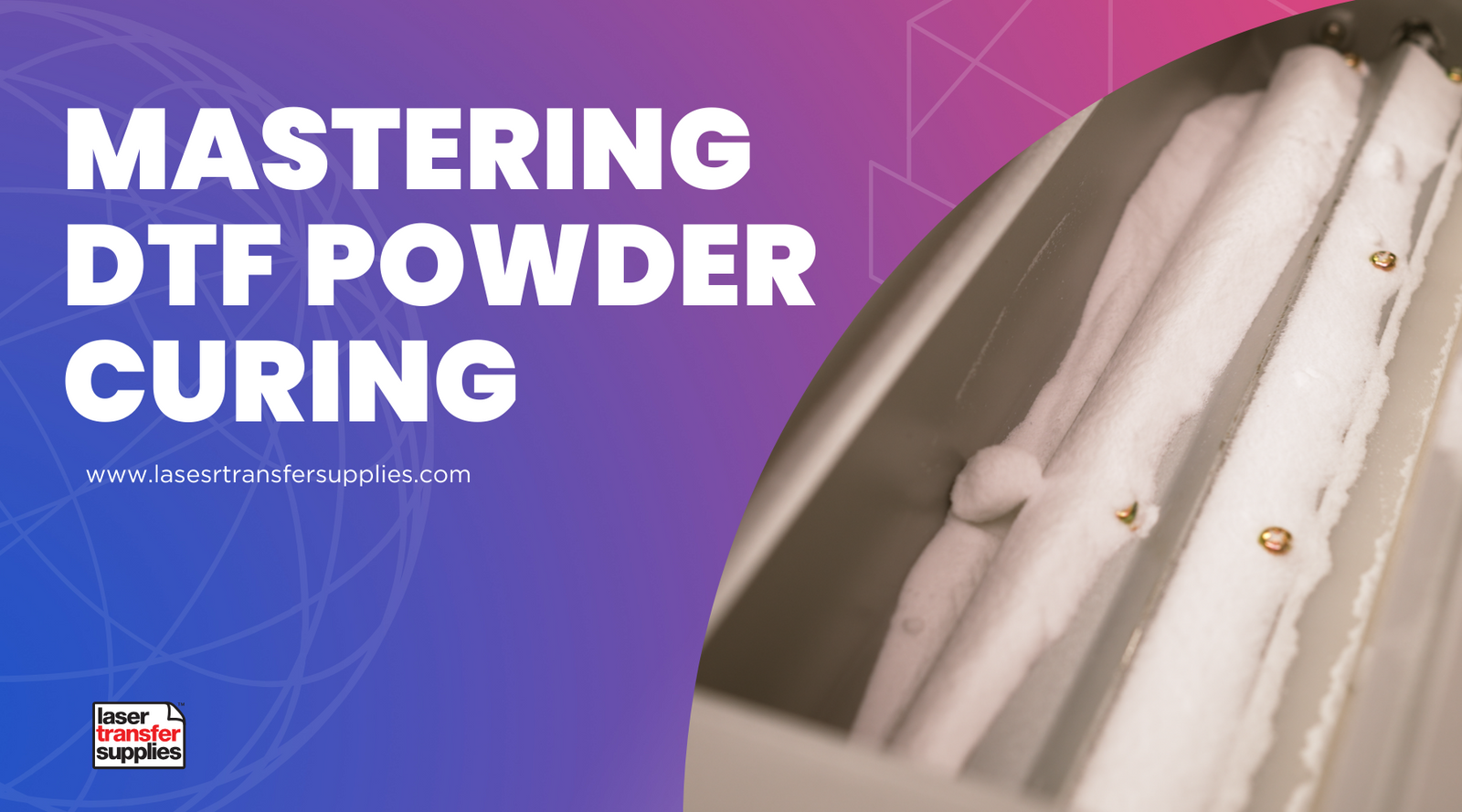
DTF (Direct to Film) printing is a popular method used in the garment industry to create vibrant and high-quality prints on various fabrics.
However, like any printing technique, DTF printing can encounter certain problems that may affect the output and overall efficiency of the process.
In this article, we will explore the top 12 common DTF printing problems and provide you with valuable troubleshooting tips and solutions to overcome them.
Top 12 DTF Printing Problems and Tips to Solve Them
- Ink Smudging
- Image Blurring
- Color Inconsistencies
- Film Wrinkling
- Poor Adhesion
- White Ink Issues
- Clogging of Printer Heads
- Printhead Strikes
- Film Not Transferring Properly
- Uneven Prints
- Image Distortion
- Film Peeling Off
DTF Printing Problem #1: Ink Smudging
You have just completed a DTF print on a t-shirt. However, upon inspection, you notice that the ink from the design has smudged and blurred, resulting in a messy and unprofessional appearance. This can be disappointing, especially if it was meant for a customer order or an important event.
Ink smudging occurs when the printed design smears or smudges during or after the transfer process, leading to an unsatisfactory final output.
Solution:
- Ensure proper drying time for the printed design before the transfer process.
- Increase the drying time or use a heat press to accelerate drying if necessary.
Maximize you DTF printing experience when you know its advantages and disadvantages.
DTF Printing Problem #2: Image Blurring
You have spent time and effort creating a detailed and intricate design for a customer's custom hoodie. However, after the transfer process, you notice that the edges of the design appear blurred and the fine details are not as crisp as expected. The blurring detracts from the overall quality and impact of the print.
Image blurring refers to the loss of sharpness and clarity in the printed design, which can make the final print look unprofessional and affect its visual appeal.
Solution:
- Use high-quality images with suitable resolution for printing.
- Adjust the print settings to maintain sharpness and clarity.
DTF Printing Problem #3: Color Inconsistencies
You are working on printing a logo with specific brand colors onto a t-shirt. However, when you inspect the final print, you notice that the colors are not accurately represented. The logo appears slightly different, with shades that are not consistent with the brand's identity. This discrepancy can be problematic, especially when striving for brand consistency.
Color inconsistencies happen when the printed colors differ from the intended or desired colors, causing frustration when trying to match specific design requirements.
Solution:
- Regularly calibrate your printer and use color profiles that match the desired output.
- Perform color tests and adjustments to achieve accurate color reproduction.
DTF Printing Problem #4: Film Wrinkling
As you prepare to print a design on a DTF film, you notice that the film is not properly stretched and secured onto the printing surface. As a result, wrinkles form on the film, causing alignment issues and distorting the final print. The wrinkles create a visually unappealing effect and undermine the precision of the design.
Film wrinkling occurs when the DTF film wrinkles during the printing process, resulting in distorted prints and compromising the accuracy of the design.
Solution:
- Ensure proper film tension and alignment on the printing surface.
- Avoid excessive tension or uneven stretching, which can lead to wrinkles.
DTF Printing Problem #5: Poor Adhesion
After transferring a design onto a fabric, you notice that certain areas of the print begin to peel off or flake after a short period of use or washing. The design's poor adhesion reduces its durability and compromises the longevity of the print, resulting in an unsatisfactory product.
Poor adhesion is characterized by the failure of the printed design to stick or adhere properly to the fabric, leading to peeling, flaking, or fading over time.
Solution:
- Apply appropriate adhesive powder or spray on the fabric before the transfer process.
- Clean the fabric surface to remove any contaminants that may hinder adhesion.
Learn how to press and apply DTF transfers like a pro with this comprehensive guide.
DTF Printing Problem #6: White Ink Issues
You are working on printing a vibrant design on a black t-shirt using white ink as the base layer. However, you notice that the white ink appears translucent and uneven, resulting in a patchy and inconsistent base for the design. This affects the vibrancy and overall visual impact of the final print.
White ink plays a crucial role in DTF printing, especially for designs on dark-colored fabrics. Issues with white ink, such as poor opacity or uneven coverage, can significantly impact the final print quality.
Solution:
- Perform regular maintenance on the printer's white ink system.
- Clean the ink lines and check for blockages that may affect ink flow and coverage.
DTF Printing Problem #7: Clogging of Printer Heads
As you begin printing a design, you notice that the ink is not flowing smoothly, resulting in uneven prints with gaps and streaks. Upon closer inspection, you discover that the printer heads are clogged with dried ink or debris, hindering the ink flow. The clogged printer heads compromise the quality and accuracy of the prints.
Clogging of printer heads can occur due to dried ink or debris, causing inconsistent ink flow and affecting the overall print quality.
Solution:
- Perform regular cleaning cycles and use recommended cleaning solutions.
- Avoid long periods of inactivity that can lead to dried ink in the printer heads.
DTF Printing Problem #8: Printhead Strikes
During the printing process, the printhead accidentally brushes against the fabric, leaving behind unwanted lines or smudges on the print. These printhead strikes create visible defects and imperfections, rendering the printed design unacceptable for use or sale.
Printhead strikes happen when the printhead comes into contact with the fabric or film, resulting in unwanted marks or damages that can lead to rejections and material wastage.
Solution:
- Ensure correct printhead height and alignment.
- Perform test prints to check for any contact issues and adjust settings accordingly.
DTF Printing Problem #9: Film Not Transferring Properly
You have carefully prepared and printed a design on the DTF film. However, upon transferring it onto the fabric, you notice that certain areas of the design do not adhere properly or transfer completely. As a result, the final print lacks clarity and appears incomplete, compromising the intended visual impact.
When the film does not transfer fully or evenly onto the fabric, it can result in missing details or incomplete prints, affecting the overall visual impact of the design.
Solution:
- Use the appropriate temperature, pressure, and duration during the heat press process.
- Perform test transfers to achieve optimal results.
DTF Printing Problem #10: Uneven Prints
Despite your efforts to maintain consistent tension and alignment, you observe that the print has areas where the ink coverage is uneven or faded. These inconsistencies in the print result in an unprofessional appearance and can disappoint both you and your customers.
Uneven prints refer to designs that appear patchy, faded, or distorted in certain areas, which can be caused by improper film tension or printhead alignment.
Solution:
- Check and adjust film tension for consistent pressure across the print area.
- Ensure accurate printhead alignment for uniformity.
DTF Printing Problem #11: Image Distortion
You are printing a design on a stretchy fabric such as a spandex blend. During the transfer process, the design appears stretched and distorted, with proportions that do not accurately represent the original artwork. The distorted image compromises the overall visual appeal and quality of the print.
Image distortion can occur during the transfer process, leading to stretched or skewed designs. This issue is particularly noticeable when printing on fabrics with stretch or uneven surfaces.
Solution:
- Choose fabrics suitable for DTF printing.
- Stretch the fabric properly and align the film correctly before transferring the design.
DTF Printing Problem #12: Film Peeling Off
After completing a successful transfer of the design onto the fabric, you notice that certain parts of the print start to peel off even with minimal use or washing. The lack of proper adhesion undermines the longevity of the print, leading to dissatisfaction and potential customer complaints.
Film peeling off after the transfer process can be frustrating, as it indicates that the design did not adhere properly to the fabric, compromising the print's durability.
Solution:
- Clean the fabric surface and remove any residues or contaminants.
- Use appropriate temperature and pressure settings during the heat press for a secure transfer.
Conclusion
While DTF printing offers numerous advantages for creating vibrant and detailed prints on fabrics, it can also encounter various problems.
By understanding common DTF printing problems and employing the appropriate troubleshooting tips and solutions, you can overcome these challenges and achieve high-quality prints.
Remember to maintain your equipment, optimize print settings, and follow best practices to ensure a smooth and efficient DTF printing process.



